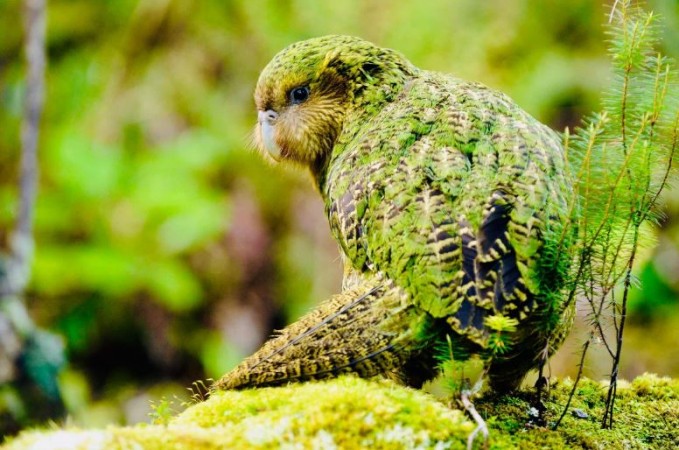
Introduction
In the diverse world of birds, the Kakapo stands out as one of the rarest and heaviest parrot species. Native to New Zealand, this flightless parrot is an intriguing creature that has captivated the attention of researchers and conservationists alike. In this article, we will delve into the fascinating world of the Kakapo, exploring its unique characteristics, conservation efforts, and the importance of preserving this remarkable species.
1. Overview of the Kakapo
The Kakapo (Strigops habroptila) is a unique parrot species endemic to New Zealand. With its vibrant green plumage, stocky build, and distinct facial features, the Kakapo is easily recognizable. Unlike most parrots, the Kakapo is flightless, relying on its strong legs and wings for balance and movement on the ground.
2. Physical Characteristics
The Kakapo is known for its impressive size and weight. On average, adult males weigh around 2.2 kilograms, making them the heaviest parrots in the world. Females are relatively smaller, weighing approximately 1.4 kilograms. Their large size is complemented by short wings, a stout beak, and large feet, which aid in climbing trees and navigating the forest floor.
3. Evolution and Adaptations
The Kakapo's unique physical characteristics are a result of its evolution on New Zealand's isolated islands. Over millions of years, these parrots adapted to a ground-dwelling lifestyle, losing their ability to fly and developing strong legs for climbing. The Kakapo's feathers provide excellent camouflage, blending with the native vegetation, and making it difficult for predators to spot them.
4. Habitat and Distribution
Historically, Kakapo populations thrived across New Zealand, including both the North and South Islands. However, due to habitat loss and predation, their range has significantly reduced. Today, Kakapos are primarily found on predator-free islands, such as Codfish Island and Little Barrier Island, where intensive conservation efforts are underway to protect and restore their populations.
5. Feeding Habits
Kakapos have a unique diet that consists mainly of native plants, seeds, fruits, and leaves. They have a preference for certain tree species, such as rimu, kahikatea, and totara, whose fruits and leaves provide essential nutrients. This selective feeding behavior plays a crucial role in the dispersal of seeds, contributing to the ecosystem's biodiversity.
6. Breeding Behavior
Kakapos have intricate breeding rituals that occur periodically. These events, known as "lekking," involve males gathering at specific locations and engaging in competitive displays to attract females. The booming vocalizations and distinctive scent emitted by males are crucial in attracting mates. The females carefully evaluate the males' performances before selecting a suitable partner.
7. Threats and Conservation Status
The Kakapo faces numerous threats to its survival. The introduction of invasive species, such as rats, stoats, and cats, has decimated their populations by preying on eggs, chicks, and adult birds. Habitat destruction, primarily caused by deforestation, also poses a significant risk. As a result, the Kakapo is classified as critically endangered, with only a few dozen individuals remaining in the wild.
8. Conservation Efforts
Efforts to conserve the Kakapo have been ongoing for several decades. The New Zealand government, in collaboration with organizations and dedicated individuals, has implemented comprehensive conservation programs. These initiatives include predator eradication, habitat restoration, captive breeding, and close monitoring of the remaining Kakapo populations.
9. Importance of Kakapo Conservation
The conservation of the Kakapo extends beyond protecting a single species. It represents a broader commitment to safeguarding New Zealand's unique biodiversity and preserving the delicate balance of its ecosystems. By conserving the Kakapo, we ensure the preservation of a remarkable piece of natural heritage that holds scientific, ecological, and cultural significance.
10. Kakapo and Human Interaction
The Kakapo's interactions with humans have been minimal due to their dwindling numbers and remote habitats. However, conservation efforts have opened up opportunities for scientists, researchers, and volunteers to work closely with these birds. These collaborations provide valuable insights into their behavior, ecology, and the challenges they face.
11. Kakapo in Maori Culture
The Kakapo holds a special place in Maori culture, representing a symbol of wisdom, guardianship, and environmental harmony. Traditionally, the Maori people revered the Kakapo as a taonga (treasure) and incorporated its significance into their oral traditions, stories, and artwork. The cultural importance of the Kakapo contributes to its conservation and recognition as a national icon.
12. Kakapo Tourism and Ecotourism
The Kakapo's unique status and limited population have sparked interest among nature enthusiasts and wildlife lovers worldwide. Ecotourism initiatives have emerged, allowing visitors to observe these charismatic parrots in their natural habitat while contributing to their conservation. Managed responsibly, Kakapo tourism can generate income for local communities and raise awareness about the species' plight.
13. Research and Scientific Discoveries
Ongoing research on the Kakapo continues to unveil new insights into their biology, behavior, and genetics. Scientists utilize advanced techniques, including DNA analysis, tracking devices, and acoustic monitoring, to study their movements, social structures, and population dynamics. These scientific discoveries aid conservation efforts and inform strategies to protect and restore Kakapo populations.
14. Future Prospects for the Kakapo
Despite the challenges faced by the Kakapo, there is hope for their future. Conservation efforts have shown promising results, with increasing numbers of successful breeding events and population growth. The continued dedication of conservationists, combined with public support and awareness, can ensure a brighter future for this remarkable parrot species.
Conclusion
In conclusion, the Kakapo is an extraordinary flightless parrot from New Zealand, renowned for its size, weight, and captivating features. The conservation of this species is of utmost importance to preserve New Zealand's biodiversity and cultural heritage. By raising awareness, supporting conservation efforts, and valuing the Kakapo as a national treasure, we can contribute to the survival and thriving of this remarkable bird.
The Rising Trend of Tote Bags: Fashion Meets Function
Dress to Impress: Creating a Jaw-Dropping Golden Outfit That Turns Heads
Beyond Conventions: Unconventional Jewelry Trends That Turn Heads